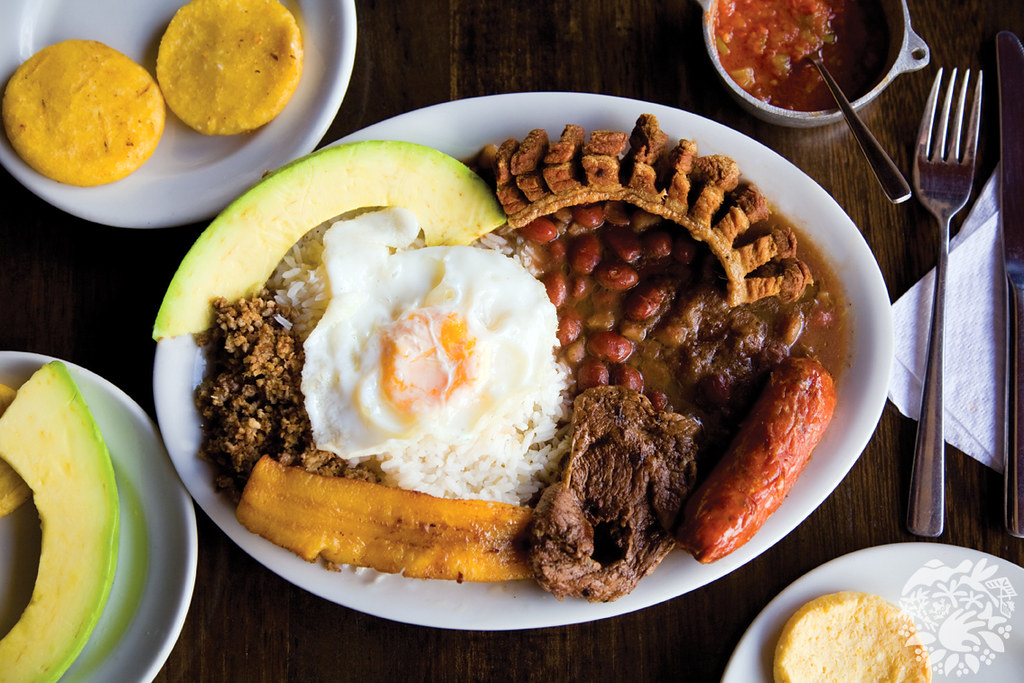COLOMBIA
A Tour of Colombian Cuisine (Caribbean, Pacific, and Andean Regions)
COLOMBIA

One of the reasons why hundreds of travelers consider visiting Colombia is the wide gastronomic offering of the country that provides all kinds of colors, flavors, and aromas to its visitors, with different specialties by region.
Here, we tell you which Colombian dishes you cannot miss in three of the regions.
Colombian Andes
The Colombian Andes are located in the central part of the country, making it the largest region in Colombia, so its gastronomic variety is one of its characteristics. Antioquia, the Cundiboyacense highlands, Tolima, Huila, and Santander are part of the departments in this region with a strong tradition in Colombian cuisine.
Ingredients grown in this area, such as potatoes in all varieties, legumes, fresh cheeses, corn used for making arepas and all kinds of doughs, and beef and pork in countless preparations, are the stars on the tables of the Colombian Andean region.
This region also includes the Coffee Cultural Landscape, the area of the country where much of the Colombian coffee renowned worldwide is cultivated.
If you want to enjoy traditional Colombian food, this is a recommended option in the central part of the country.
Main Dish: Bandeja Paisa

Dessert: Cuajada with Melado
A simple dessert with the perfect balance of sweetness in the mouth. It consists of a portion of cuajada, fresh cheese without added salt, mixed with melado, a type of caramel obtained by condensing panela. The two ingredients together create a burst of flavor and texture that you must try in this area.
Drink: Panela Lemonade
This is one of the most traditional drinks, prepared with water, grated panela, and lemon, and can be served with ice; it is ideal for refreshing at any time of the day. A good tinto cerrero (strong coffee), sweetened with panela, can also be a good finish to lunch in the Colombian Andean region.
Pacific Region
The African heritage of the early inhabitants of Colombia during the conquest is quite evident in the gastronomy of the Pacific region.
Dishes based on local fish and unusual mixes with the flavors of Colombian exotic fruits from the region are part of the traditional table of this western area of the country, which includes the department of Chocó and the coastal areas of Cauca, Valle del Cauca, and Nariño.
Flavors range from unmistakable fried, stewed, or roasted cod to soups and seafood cocktails, which in popular culture are believed to have aphrodisiac properties. But beyond the myths, here’s what we recommend for you to taste the Pacific in your lunch or dinner:
Main Dish: Pusandao de Bagre
This traditional soup from the Colombian Pacific region is made with fresh catfish stewed in coconut milk with yucca, potatoes, and plantains.

Ingredients are generally cooked in traditional clay pots, and the soup is served in a bowl to preserve the flavor; it's worth noting that due to the portion size and the amount of ingredients, this typical dish from the Pacific region is not a starter but a main course.
Dessert: Cocada
It is a dessert with few ingredients but a lot of flavor. Cocadas are traditional both in the Pacific and Caribbean regions of Colombia and have become so popular that they can be found throughout the country.
This sweet treat is made with panela and grated coconut to create a dough that molds while hot and is consumed cold once it solidifies.
Drink: Borojó Juice
The borojó is a fruit grown in the Colombian Pacific region that, although not very well-known, has many health benefits. Due to its high content of vitamin B and niacin, it is an energizing fruit, so a borojó juice in water or milk can help lift your spirits and replenish your energy.
Caribbean Region
The cuisine of the Caribbean region is full of flavor and color. The fertility of the Colombian Caribbean lands allows for the cultivation of all kinds of fruits, vegetables, and legumes, and its proximity to the sea ensures that seafood is always served on the table with different touches from European, African, and Creole cuisine.
If during your visit to Bolívar, Atlántico, Cesar, Córdoba, Magdalena, Sucre, or northern Antioquia you want to try a representative lunch or dinner from the region, here’s what we recommend:
Main Dish: Coconut Rice with Shrimp
In Colombia, there is a variation of rice in all regions, and the traditional Caribbean version is coconut rice with shrimp.
It is prepared using coconut milk instead of water and adding fresh shrimp, vegetables such as green beans or peas, and natural seasonings to intensify the flavor.
Dessert: Tamarind Balls
Tamarind is a exotic fruit traditional to the cuisine of the Colombian Caribbean region. Its sour flavor has made it a very popular ingredient for making juices and sauces that accompany meats, but it is also the star of a traditional Colombian dessert: tamarind balls.
This sweet treat is made from a paste prepared with sugar and tamarind pulp, which is shaped into balls and then refrigerated to be consumed at any time of the day, especially after lunch.
Drink: Corozo Juice
The corozo is another Colombian exotic fruit used to make juices, sweets, jellies, chichas, wines, and even jams. Its high vitamin C content makes corozo a highly sought-after ingredient, and its citrusy and sweet flavor is ideal for making a refreshing juice, especially on the hottest days.

Source: Asawaa
We recommend consuming the juice not too thick, as if it is too concentrated, it may act as a laxative for those who do not consume it often.
Feeling tempted? Decide to travel through Colombia and let yourself be captivated not only by its landscapes but also by the unique flavors full of history and tradition from these three regions of Colombia.
You might also be interested in: Tour of Colombian Cuisine (Insular Region, Orinoquía, and Eastern Llanos)



















